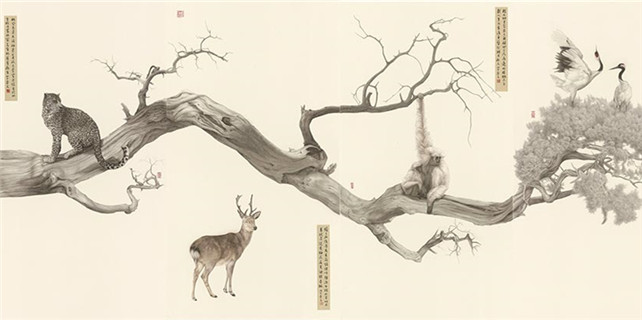Weaving dreams
But after he checked the factory in Northwest China, Khan realized the problem couldn't be easily resolved. So, he decided to stay longer so he could make a special machine and even go back to Pakistan to get the material needed to bleach the wool. After a month, the issues were resolved.
Back then, problems like floating hair were common for woolen carpets made in Qinghai, which harmed the company's image.
While Khan was in Qinghai, he taught the local workers to bleach and clean the products, and helped the factory to add procedures to deal with such problems in the future.
His professional approach impressed the Chinese company, which pleaded with him to stay.
But by then, Khan's former boss wanted him to return to the US. Faced with a dilemma, he decided to ask his family for advice.
"While my elder brother thought I was crazy to work in China instead of trying to get a US green card, my father suggested I stay in China, because of the country's good relations with Pakistan and its development opportunities," Khan says of the time when he resigned from the US company.
In the past, Tibetan woolen carpets were not very popular in the international market, compared with products from Iran, India and Pakistan, because of the traditional way of manufacturing that involved curing in the sun that led to loss of color and damage to fabric.
After Khan joined the Chinese company, he used his experience in bleaching, designing, dyeing and cutting wool to produce carpets.
For example, he introduced a traditional Pakistani plant-dyeing technique to enhance color schemes in carpets and improved the drying system at the Qinghai factory.
Chen Xuewu, a deputy manger at Qinghai Tibetan Sheep Carpet Group, says Khan has helped the company, which now has several branches around the country, not only to develop new products but also get patents.
"I have confidence that both our domestic and international markets will keep growing," says Khan, adding he is aware of customer preferences in different markets and the need to design carpets accordingly.









